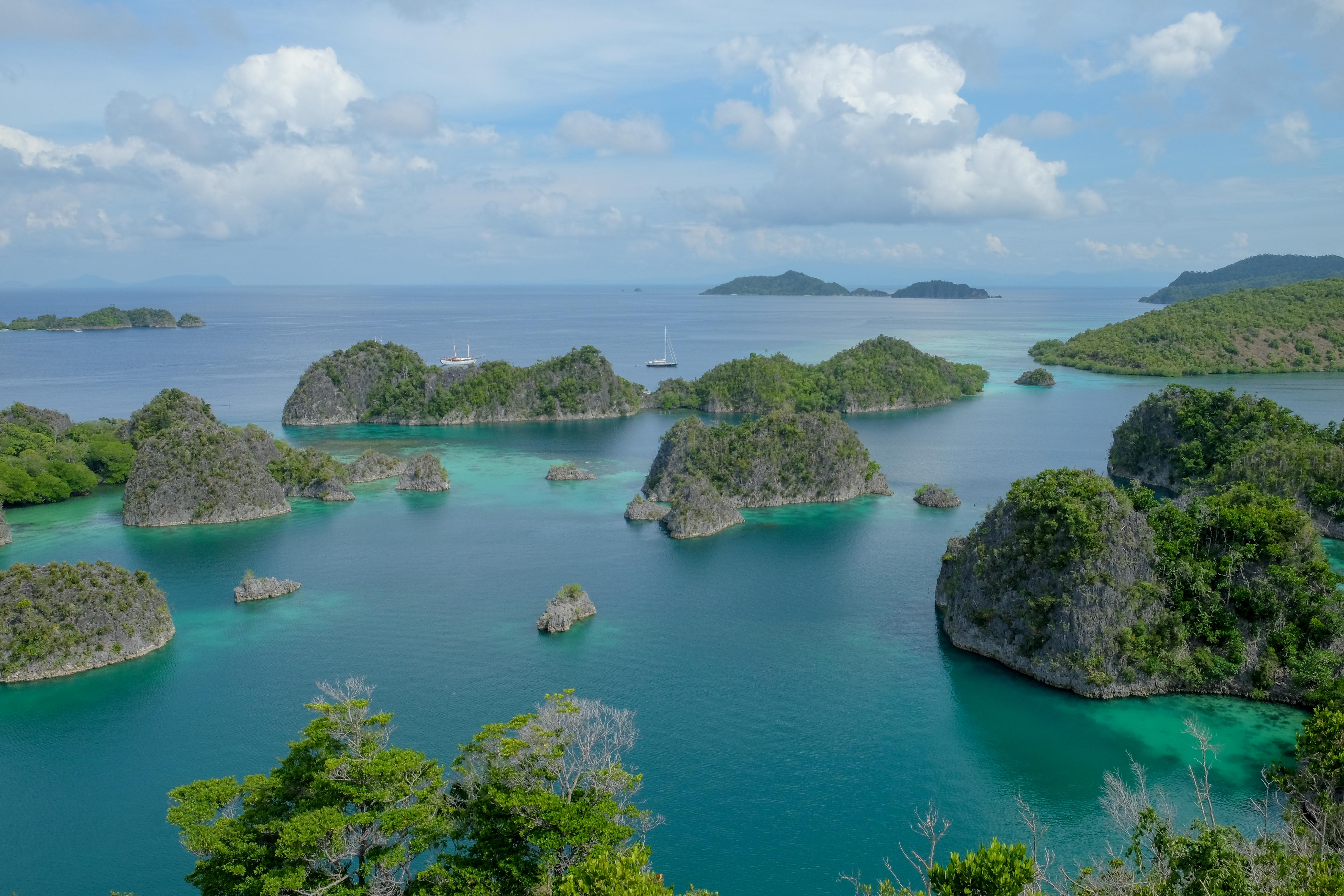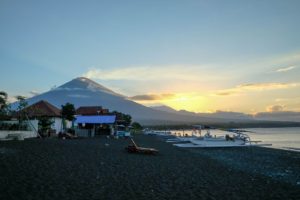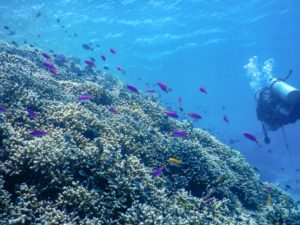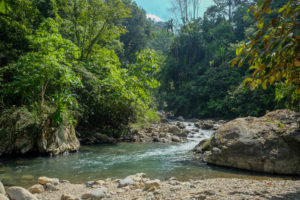When I ask other divers, which spots they would advocate for diving in South East Asia I usually get a variety of great recommendations. But then, at the end of the list there is always the same place. Voices are getting soft and low, eyes are beginning to glare … and there is Raja Ampat.
After a sigh and solemn pause, it is often followed by a word of caution: But don’t go there too early. You will be spoilt for a lifetime, there are not many better places.
Regularly I also hear about strong currents in the area, and that it is not particularly suited for unexperienced divers. I had only learnt to dive in February 2018, was Open Water Diver (which is the basic level 1) and had had 21 dives when I decided to go on a liveaboard there – a dive boat cruising the waters of central and Northern Raja Ampat for 7 days. There was still some last-minute space left, so I booked a bed in a small 2-person cabin, the price was reduced and reasonable (in Raja Ampat terms and compared to the luxury boats) and it sounded good to me that the tour was organized by a conservation NGO, with marine biologists on board as well. But of course, you never know….
Raja Ampat is situated in the very East of Indonesia – a marine protected area close to Papua, covering a total area of over 4 million hectars bigger and smaller islands and islets, reefs and big blue ocean, of which 1,4 million ha are protected. 75% of all known coral species in the world and an incredible biodiversity of marine life can be found here, more than 1400 species of reef fish – big and small. Big mantas, dolphins and whales pass by or stay here regularly, to mate, socialize, feed or for other reasons and on pathways we have very little knowledge of.
Despite all warnings, I decided to go there. Because I was in the area and could avoid long and expensive travels to Raja Ampat, which is not particularly easy to reach. I had been diving quite a bit in the past months and have always felt great and quite confident under water. If there would be conditions not suitable for me I could stay out of the water for a dive or two.
And, last but not least, I thought to myself: Why wait? What for? I am spoilt in many other ways already anyway – in the sense that I know very well how good likes, tastes and feels like – so why not go there NOW? Especially also because November is a very good month and who knows what and where I will be in winter 2019? I decided not to save it for tomorrow, or whenever, or perhaps never.
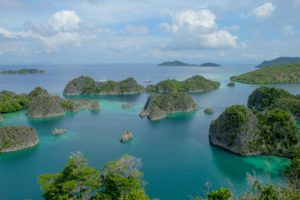
Today is November 25, 2018 and I just got off our boat, Ratu Laut – Queen of the Sea – after 7 days and 6 nights. Back on solid ground I feel dizzy, like everything is moving a bit. My body obviously misses the soft swaying of the boat.
I have been under water for more than 3 hours every day. I was without WiFi or any other connection to the outer world. I chose the very upper deck of our boat as my bedroom and was sleeping under the moon and stars for the past 6 nights.
8 other guests or volunteers from Barefoot Conservation were on board, plus a wonderful crew, which was led by an amazing Australian girl – Wendy, our Cruise Director, who was both leading at a highly chilled eye-to-eye level and very clearly if needed. She is also dive instructor and I decided to do my Advanced Open Water Certification with her while on the boat. I loved her detailed dive briefings – and then we go up Zig zig zig … guys, the currents are really strong here, so try to go down fast, but as soon as you have reached the reef chilll …. Only listening to the briefings, hearing her excitement when she was talking about Wobeggongs, coral pygmy seahorses, big schools of fusiliers or sweetlips hanging out around the coral bommies or grey reef sharks we might encounter on the sandy bottom just made me want to jump into the water immediately.
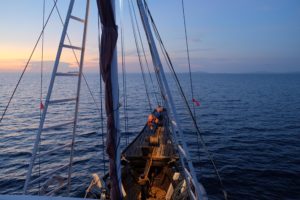
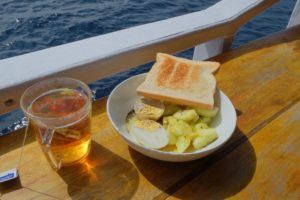
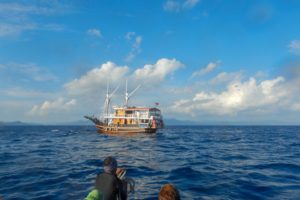
Goosebumps over and under water. I was floating half a meter over the bottom when the first manta of my life with more than 5 meters wing-spread was flying right over our heads. Pure power in slow motion that pulls you closer. Graceful alive marine planes starting and landing. I saw my first pygmy sea-horse, with a size of a few millimeters, a small cutie with which you have to fall in love in an instant. Or the tiny hairy orange octopus. We discovered Wobeggong sharks, sleeping under rocks, probably the cutest looking sharks you can ever imagine. I did not even know they existed before. Black-tip reef sharks practically on every dive, the more current the more nutrition, the more sharks. The white-tip reef sharks are already more redoubtable, and occasionally also grey reef sharks, the ones which look already like proper sharks. They were quite close. Wow!
An abundance of colourful reef fish in all sizes and forms, hard and soft corals in breathtaking coral gardens as far as the eye can behold.
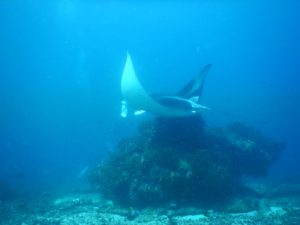

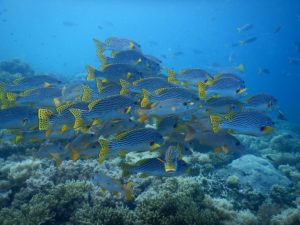
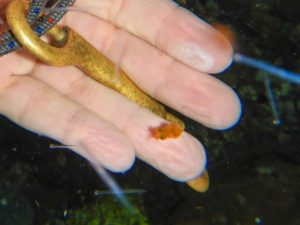
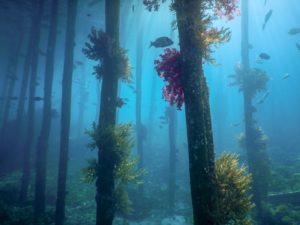
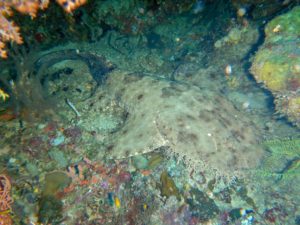
We have been diving in some quite strong currents (around 7 on a scale from 0 to 10 according to chief Wendy), in some cases we had to do a negative entry, which basically means without any air in the BCD (“diving jacket”), rolling back from the boat in open water, head down, finn and try to get to the protection of the reef or next to the bottom quite fast, so that we are not taken out into the blue or over the reef by the current. It’s challenging, I had a lot of respect for the waters, but also a lot of fun in trying to drift well controlled and make friends with the aquatic forces. And I admired all the fish who seemed to float effortlessly while the underwater winds were shaking and rocking the corals, anemones and feather stars. Sometimes we needed to hook in with a reef hook and were hanging around in the strong currents with huge schools of fish, sharks, barracudas or jacks coming by, feeding on loads of plankton or smaller fish in the water. So much fun!
The water is full of nutrients and plankton, sometimes impacting visibility a bit. During one of the night dives it was practically impossible to take pictures because of all the reflecting small creatures, which you could even feel prickling on your skin all the time.
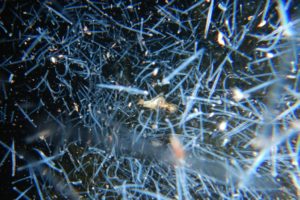
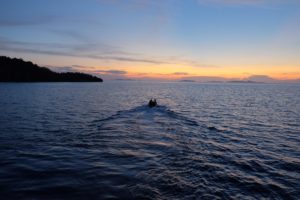
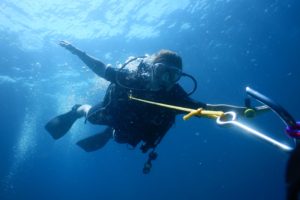
Every dive site was something new, a different kind of magic, different ecosystems, always surprising, exciting, enchanting, often chill, sometimes a bit thrill. Cape Kri, Yanbuba, Eagle Rock, Melissa’s Garden, Citrus Ridge, Dampier Strait, Chicken Reef, Blue Magic …
Moments of real-life cuteness overload. At the end of one of our dives an adorable 30cm large cuddle-fish photobombed while I was filming. When I approached him he was first a bit defensive, but got more and more relaxed and finally even led us to his girlfriend, who was waiting some corals further away – he obviously didn’t want to leave her without his flirting too long. Haha! When he was swimming by Wendy, who was silently observing as well, he was as close as an armlength and you could really see how hard it was for her to hold back and not give him a small caressing. Or the giant pufferfish wish his incredibly big baby eyes, whom I met in front of its hide-out in the reef. It was swimming around me for minutes, just curious to inspect this other strange bubbling animal.
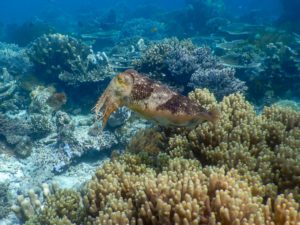
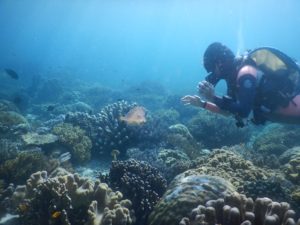
Under water time always stands still. The world stops.
When you swim and float in the endless blue, the big primordial soup, when you see the world at its very best, as it can be …. when you close your eyes for a second and forget about marine plastic pollution, adverse effects of mineral oil extraction and transportation, overfishing and global warming … when you wake up to the sound of an anchor chain rattling down as the boat stops after a night cruise, when you can’t wait to roll back into the deep, when you skip the night dive because you need some time to just stare into the horizon and give your soul time to catch up with all the pictures and impressions …. then you know how it can be. Life at its best on our magic blue planet.
If this is being spoilt, I want to be spoilt. I want to have a calibration how the utmost beautiful and best can look and feel like.
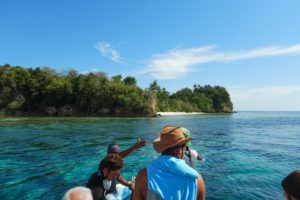
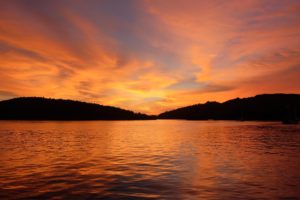
Raja Ampat is epic. Good protection efforts are ongoing, which need to be extended to ensure sustainability for the ecosystems as well as the people living in the area. There are No Go Zones, with strictly limited access for scientists. There are No Take Zones, where fishing is entirely prohibited, but responsible diving and tourism is allowed. And there are Traditional Use Zones, set aside for community benefit including local, sustainable fishing practices. I am a bit schizophrenic about access to Raja Ampat: it is hard to reach and this is good to limit visitors somehow, but at the same time the region needs to make sure it does not become a marine disneyland for those who can afford. If you have been there you will most probably look at things differently, consider what your contribution can be to preserve wonders like this. Hopefully.
Don’t go there too early. Save it for later. Save the best for last. Why? This concept transcends also most religions on our planet, a belief that a better life is waiting for us. Already from early days onwards most of us learn that we have to restrict ourselves here and now, in order to earn a better life later.
On a conceptual level I do not believe this. I see how wonderful this world and our planet is and from its basic setup I can hardly imagine a more beautiful and pristine place. And it is a common and very bad excuse for not taking care of our environment, because this life does not matter anyhow.
On a very profane level this holds a lot of truth. Yes, we have to restrict ourselves – but not in restricting the joy and happiness we allow ourselves to feel, not by not drinking a glass of good wine, not dancing, not loving. Not by not responsibly enjoying pleasures this life has to offer.
We have to restrict ourselves in the ways we live and carelessly ruin our planet by doing so. Restrict ourselves in the way we use our resources, by avoiding plastic wherever we can, by eating a much more plant-based diet, by carefully using the energy we consume – this is how we are creating and earning a better life. Here and now on this planet. Minute by minute. I have met some inspiring role models in this respect in the past week. Our marine biologist who was carrying around a small bag with a steel straw plus miniature cleaning brush, his own cutlery, a wooden spoon. Simple things. On one of the islands we went trekking he bought a living coconut crab from locals selling it at the jetty. We brought it on board only to release it into freedom in a safe place later. But why do you do this? They will catch another one and sell it. Yes, maybe, Hendrik replied, but for this one we made a difference.
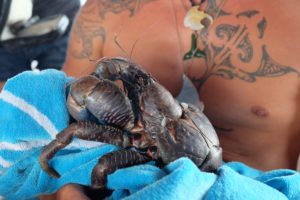
Go out. Go there early. Life is vibrating. The magic of Big Mama Earth is still there. And it’s very strong in some places. Don’t save the best for a tomorrow that will or will not come. Go for the very best, even if you will be spoilt forever. Go after what gives you goosebumps. Because then you know what it‘s worth fighting for.

